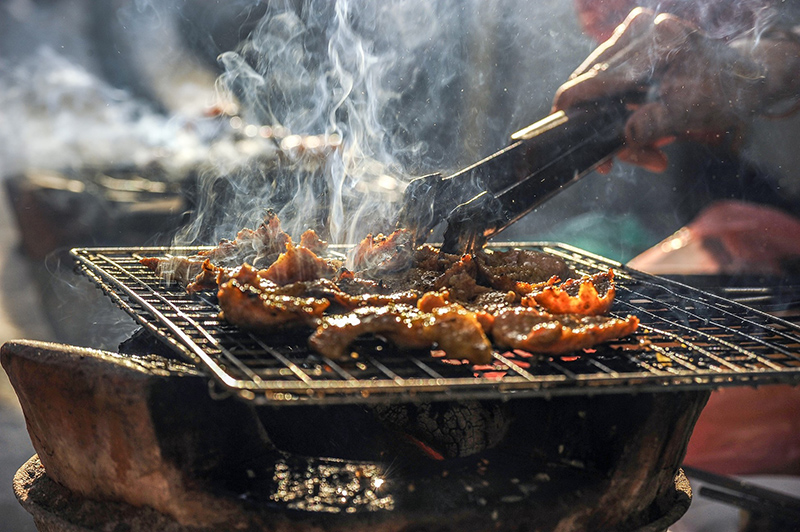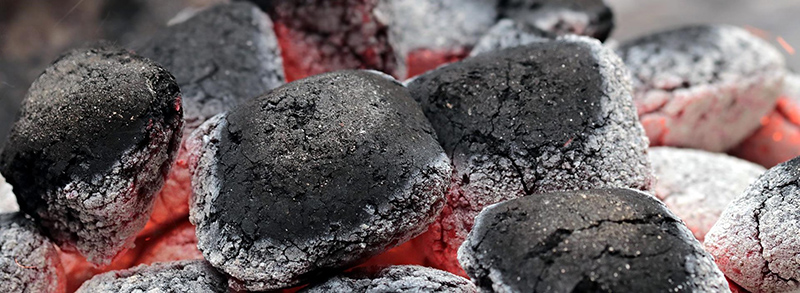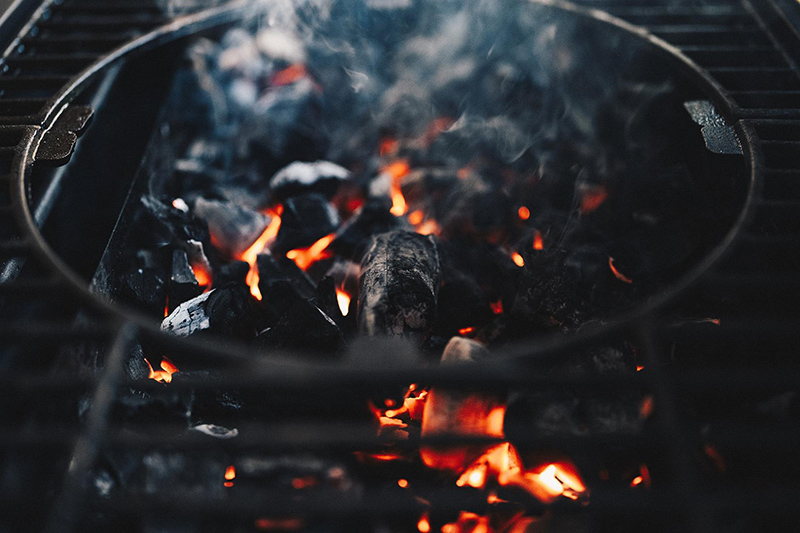- Mon-Fri 9am-4pm EST
- 888-663-4621
A Comprehensive Guide to Outdoor Grilling Grilling is one of the most popular and treasured pastimes for most Americans. The grill offers a variety of recipes that make for delicious food in the summer, which is why grilling is such an essential part of any backyard barbecue. Frequently, people are hesitant to put this much work into a meal only to have it fail at the last minute. We've got you covered if you're looking for some grilling tips and tricks! In this comprehensive guide to outdoor grilling, we'll discuss all aspects of what makes a grill great: its design and setup to what you need nearby in an emergency.

Of course, before we get into the nitty-gritty, let's look at the three types of grills available: charcoal, gas, and electric. For most home grillers, gas is an easy answer for the best grills for beginners. These grills are easy to ignite and manage. They require minimal effort to start with adjustable temperature levels that make them ideal for everyone's favorite recipes. Suppose you live in an urban or suburban area. In that case, some people will think it's much work to find charcoal and wood pieces for a campfire outside their home, so they'll opt for an entirely gas-based grill system.
Before you can master any of these grills, you need to look at your outdoor patio or deck. Most homes have a designated area where they keep their grilling supplies, including the grill itself and its parts. Begin by breaking down your grill. Most gas grills come with a storage bag or tray where you can put all your accessories, including the propane tank and other essential tools for cooking.
On most grills, you'll have four places to choose from: high, low, side, and front-facing. Front-facing grills are the ones used to cook food directly over an open flame. This is the best choice for beginners because they don't need anything too complicated, like moving parts. This will be your best bet if you're trying to find an excellent outdoor grill.
Before you start grilling, make sure that you have all of the necessary equipment on hand. The most common gas grills use propane cylinders, but you can also use natural gas if your home has it available. You'll also need a torch lighter or extra fuel to help light the grill on fire. Nevertheless, remember that this is one of those skills that you should master before starting any outdoor cooking process!
Grilling is a pretty precise process, meaning you'll need to get everything in order before you start cooking on your propane grill.
This device is attached to your grill and will shut off the propane tank if it detects too much oxygen in the area. Since this device is so important, make sure that you remember to check it every time you grill!
This valve will let out leftover propane from the tank into your attached hose and away from your home and family.
Don't forget the fire safety rules! Never put the propane tank on an elevated surface, and don't let it get in contact with any heat source (including a direct flame.)

As we said before, grilling has become a beloved pastime for many people. However, there are some essentials that you need to invest in before you start cooking!
This is one of those tools that you can't do without. Tongs are used to flip food on and off the grill. They help in preventing you from burning yourself as well by being able to grab your food without having to touch it directly. Long-handled tongs are ideal for cooking smaller pieces of food that are closer to the fire. Spoons can't do the job that tongs will!
Keep these items next to you during grilling! The brush helps spread marinades and sauces, while the spatula and flipper are used to flip or remove food from your grill.
Notice the difference? A spatula has a flat cooking surface, while a flipper is rounded on one side with a small lip for grabbing food efficiently.
Have some durable gloves on hand! They're a must because you'll need to grab hot or smoldering items. This comes in handy when you have food that's ready to be picked up and served. You can also use it for cooking food in a foil or aluminum pan!
Grilling is serious business; you should always have a fire extinguisher nearby just in case anything happens. You might need it to put out a grease fire or flare-ups caused by liquids landing on your grill.
These are ideal for cooling down your food after you've finished grilling them. They're also a great way to add moisture back into your food. Place the meat on a cooling rack along with equal amounts of water, salt, and pepper and let it cook for an hour or so.
These help prevent cross-contamination so that you're not contaminating your work area when removing your food from the grill. They're an essential tool for any grilling pro!
It's a must-have for every home griller. Become familiar with what different temperatures feel like, so you can know when your food is cooked perfectly. For instance, chicken breasts should reach an internal temperature of around 165 degrees. Meat thermometers come in many styles and shapes, but the stick variety or digital versions are the most common.
Grilling is one of the most popular forms of cooking on the market, but following some safety tips is essential to protect you and your guests from any potential blunders!
This is probably the most crucial tip in this entire article. Cross-contamination is when you fail to separate your raw proteins from other foods that may have been cooked. Make sure you have at least two separate cutting boards, one for your raw proteins and one for your cooked food.
Many grills have a temperature gauge to help you monitor the temperature levels inside the grill itself. It's also important not to turn on your fuel until there's a flame from the burner. This ensures that you don't risk any accidental fire.
Many believe grills must be heated to high temperatures to prepare food, but this isn't the case! A grill is not an oven and must be kept between 350 and 400 degrees Fahrenheit to cook your food correctly. You'll also notice a lot of charring or burnt pieces if you heat your grill too high.
After you're done grilling, clean the grill and replace the paper towels and aluminum foil you used throughout the process. This will guarantee that your grill is in tip-top shape when you're ready to grill out again!
This is an amazing feature on most gas grills, and it can help keep your grill clean. It's not just for looks, though! Using it will help ensure that your grill keeps working at peak performance.
Cleaning the interior parts of your unit is a crucial step that you'll want to take care of regularly. It's essential to use high-quality cleaning supplies that won't damage the paint or cause rusting.
If you're cooking for a large group and can't be home to keep an eye on your grill, plan ahead so that you have enough propane to last the entire cooking process. Check the unit for leaks before starting if you're using a portable propane tank.
Have a fire extinguisher handy in case things get out of hand. Make sure it's easy to access and fully charged just in case someone accidentally sets something on fire! Grill fires can quickly get out of control and cause damage or injury unless extinguished.
While grilling, it's easy to grab something hot and get burned, but don't panic! Make sure that you have cold water on hand in case this happens to you. Water is also handy to have to cool down coals that are getting overheated and burning your food.

You must login to post comments.